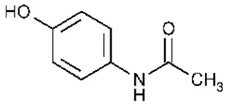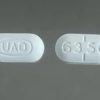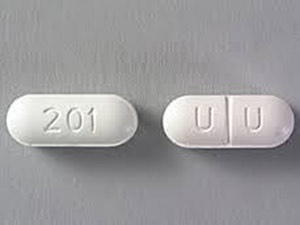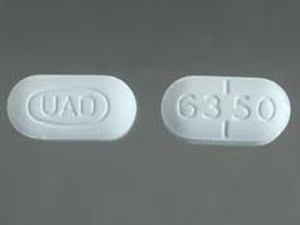https://verifieddrugsmarket.com/product/lorcet-10-650mg-
Lorcet Tablets Description
Hydrocodone bitartrate and acetaminophen is supplied in tablet form for oral administration. Hydrocodone bitartrate is an opioid analgesic and antitussive and occurs as fine, white crystals or as a crystalline powder. It is affected by light. The chemical name is: 4,5α-Epoxy-3-methoxy-17-methylmorphinan- 6-one tartrate (1:1) hydrate (2:5). It has the following structural formula:

Acetaminophen, 4′-Hydroxyacetanilide, a slightly bitter, white, odorless, crystalline powder, is a non-opiate, non-salicylate analgesic and antipyretic. It has the following structural formula:

Hydrocodone bitartrate and acetaminophen tablets, USP for oral administration are available in the following strengths.
| Product Strength | Hydrocodone Bitartrate USP | Acetaminophen USP |
|---|---|---|
| Lorcet ®5 mg/325 mg | 5 mg | 325 mg |
| Lorcet ® PLUS 7.5 mg/325 mg | 7.5 mg | 325 mg |
| Lorcet ® HD 10 mg/325 mg | 10 mg | 325 mg |
In addition, each tablet contains the following inactive ingredients: croscarmellose sodium, crospovidone, magnesium stearate, microcrystalline cellulose, povidone, pregelatinized starch, and stearic acid.
The 7.5 mg/325 mg tablets also include D&C Yellow #10 aluminum lake.
5 mg/325 mg, 7.5 mg/325 mg, and 10 mg/325 mg; Meets USP Dissolution Test 1.
Related/similar drugs
aspirin, acetaminophen, ibuprofen, tramadol, duloxetine, naproxen, Tylenol
Lorcet Tablets – Clinical Pharmacology
Hydrocodone is a semisynthetic narcotic analgesic and antitussive with multiple actions qualitatively similar to those of codeine. Most of these involve the central nervous system and smooth muscle. The precise mechanism of action of hydrocodone and other opiates is not known, although it is believed to relate to the existence of opiate receptors in the central nervous system. In addition to analgesia, narcotics may produce drowsiness, changes in mood and mental clouding.
The analgesic action of acetaminophen involves peripheral influences, but the specific mechanism is as yet undetermined. Antipyretic activity is mediated through hypothalamic heat regulating centers. Acetaminophen inhibits prostaglandin synthetase. Therapeutic doses of acetaminophen have negligible effects on the cardiovascular or respiratory systems; however, toxic doses may cause circulatory failure and rapid, shallow breathing.
Pharmacokinetics
The behavior of the individual components is described below:
Hydrocodone
Following a 10 mg oral dose of hydrocodone administered to five adult male subjects, the mean peak concentration was 23.6 ± 5.2 ng/mL. Maximum serum levels were achieved at 1.3 ± 0.3 hours and the half-life was determined to be 3.8 ± 0.3 hours. Hydrocodone exhibits a complex pattern of metabolism including O-demethylation, N-demethylation and 6-keto reduction to the corresponding 6-α- and 6-β-hydroxy-metabolites. See OVERDOSAGE for toxicity information.
Acetaminophen
Acetaminophen is rapidly absorbed from the gastrointestinal tract and is distributed throughout most body tissues. The plasma half-life is 1.25 to 3 hours, but may be increased by liver damage and following overdosage. Elimination of acetaminophen is principally by liver metabolism (conjugation) and subsequent renal excretion of metabolites. Approximately 85% of an oral dose appears in the urine within 24 hours of administration, most as the glucuronide conjugate, with small amounts of other conjugates and unchanged drug. See OVERDOSAGE for toxicity information.
Indications and Usage for Lorcet Tablets
Hydrocodone bitartrate and acetaminophen tablets are indicated for the relief of moderate to moderately severe pain.
Contraindications
Hydrocodone bitartrate and acetaminophen tablets should not be administered to patients who have previously exhibited hypersensitivity to hydrocodone or acetaminophen.
Patients known to be hypersensitive to other opioids may exhibit cross-sensitivity to hydrocodone.
Warnings
Hepatotoxicity
Acetaminophen has been associated with cases of acute liver failure, at times resulting in liver transplant and death. Most of the cases of liver injury are associated with the use of acetaminophen at doses that exceed 4000 milligrams per day, and often involve more than one acetaminophen-containing product. The excessive intake of acetaminophen may be intentional to cause self-harm or unintentional as patients attempt to obtain more pain relief or unknowingly take other acetaminophen-containing products.
The risk of acute liver failure is higher in individuals with underlying liver disease and in individuals who ingest alcohol while taking acetaminophen.
Instruct patients to look for acetaminophen or APAP on package labels and not to use more than one product that contains acetaminophen. Instruct patients to seek medical attention immediately upon ingestion of more than 4000 milligrams of acetaminophen per day, even if they feel well.
Serious Skin Reactions
Rarely, acetaminophen may cause serious skin reactions such as acute generalized exanthematous pustulosis (AGEP), Stevens-Johnson Syndrome (SJS), and toxic epidermal necrolysis (TEN), which can be fatal. Patients should be informed about the signs of serious skin reactions, and use of the drug should be discontinued at the first appearance of skin rash or any other sign of hypersensitivity.
Hypersensitivity/anaphylaxis
There have been post-marketing reports of hypersensitivity and anaphylaxis associated with the use of acetaminophen. Clinical signs included swelling of the face, mouth, and throat, respiratory distress, urticaria, rash, pruritus, and vomiting. There were infrequent reports of life-threatening anaphylaxis requiring emergency medical attention. Instruct patients to discontinue Hydrocodone Bitartrate and Acetaminophen Tablets, USP immediately and seek medical care if they experience these symptoms. Do not prescribe Hydrocodone Bitartrate and Acetaminophen Tablets, USP for patients with acetaminophen allergy.
Respiratory Depression
At high doses or in sensitive patients, hydrocodone may produce dose-related respiratory depression by acting directly on the brain stem respiratory center. Hydrocodone also affects the center that controls respiratory rhythm, and may produce irregular and periodic breathing.
Head Injury and Increased Intracranial Pressure
The respiratory depressant effects of narcotics and their capacity to elevate cerebrospinal fluid pressure may be markedly exaggerated in the presence of head injury, other intracranial lesions or a preexisting increase in intracranial pressure. Furthermore, narcotics produce adverse reactions, which may obscure the clinical course of patients with head injuries.
Acute Abdominal Conditions
The administration of narcotics may obscure the diagnosis or clinical course of patients with acute abdominal conditions.
Misuse, Abuse, and Diversion of Opioids
Hydrocodone bitartrate and acetaminophen tablets contain hydrocodone, an opioid agonist, and is a Schedule II controlled substance. Opioid agonists have the potential for being abused and are sought by abusers and people with addiction disorders, and are subject to diversion.
Hydrocodone bitartrate and acetaminophen tablets can be abused in a manner similar to other opioid agonists, legal or illicit. This should be considered when prescribing or dispensing hydrocodone bitartrate and acetaminophen tablets in situations where the physician or pharmacist is concerned about an increased risk of misuse, abuse or diversion (see DRUG ABUSE AND DEPENDENCE).
| Pills Quantity | 120 Pills, 180 Pills, 240 Pills, 300 Pills, 60 Pills |
|---|
Be the first to review “Lorcet 10/650mg” Cancel reply
Related products
Buy Lorcet Online
Buy Lorcet Online





Reviews
There are no reviews yet.